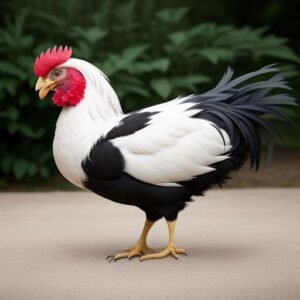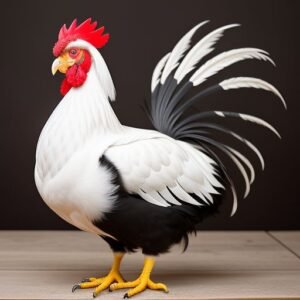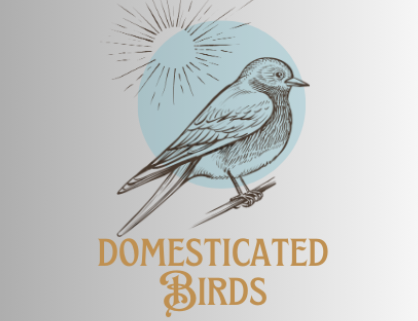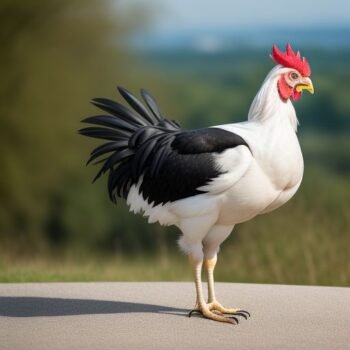The Silver Leghorn chicken, a breed known for its elegance and prolific egg-laying abilities, has long captured the admiration of poultry enthusiasts worldwide. In this comprehensive guide, we delve into the rich history, distinctive characteristics, and practical aspects of raising Silver Leghorns. From their origins to practical tips for maximizing egg production, this article serves as a valuable resource for both novice and experienced chicken keepers.
Origin of Silver Leghorn
The Silver Leghorn traces its roots back to Italy, where it was developed in the late 19th century. Bred for its exceptional egg-laying prowess, the Silver Leghorn quickly gained popularity among poultry keepers for its productivity and striking appearance.
Why it was Named as
The name aptly describes the breed’s distinctive silver plumage and Leghorn heritage. The term “Leghorn” refers to the port city of Livorno in Italy, where the breed was first cultivated.
History of Silver Leghorn
Back in the day, breeders wanted a chicken that laid lots of eggs and looked pretty too. They started with Leghorn chickens, already known for laying tons of eggs. Then, they carefully picked the Leghorns with the nicest feathers and best egg-laying skills to make a new breed – the Silver Leghorn. It took a lot of time and effort, but eventually, they got the Silver Leghorn we know today, with its shiny silver feathers and knack for laying eggs. And that’s how the Silver Leghorn came to be!
Appearance of Silver Leghorns
These are characterized by their sleek, athletic build and striking silver plumage. They boast a proud carriage, with a slender body, long neck, and upright tail. Their feathers exhibit a beautiful silver luster, with black accents on the neck and tail.
Silver Leghorn Color
The defining feature of is its stunning silver plumage, which shimmers in the sunlight. The feathers have a metallic sheen, giving the bird an eye-catching appearance. Black accents on the neck and tail feathers add contrast and elegance to the overall coloration.
Silver Leghorn Size and Weight
These are considered medium-sized chickens, with hens typically weighing around 4-5 pounds and roosters slightly heavier at 5-6 pounds. Despite their modest size, these birds possess remarkable vitality and energy.

Hen vs Rooster
When it comes to Silver Leghorns, hens and roosters may share the same stunning silver feathers, but they’ve got their own unique vibe going on.
Silver Leghorn Roosters: These guys are the kings of the coop. They’re a bit bigger and tend to strut around like they own the place. With their assertive attitude, they take on the role of protector, keeping a watchful eye over their flock. You’ll often find them crowing proudly to assert their dominance.
Silver Leghorn Hens: Now, hens are a whole different story. They’re smaller and more laid-back compared to their rooster counterparts. While the roosters are busy flexing their feathers, the hens are focused on the important stuff – laying eggs. They’re the quiet achievers of the flock, diligently working to keep those egg baskets full.
Silver Leghorn Chicken Characteristics
Silver Leghorn Temperament:
These are like the adventurers of the chicken world! They’re always up for a good explore and thrive when they have the freedom to roam and peck around in the great outdoors. Sure, they can be a tad skittish at times, but underneath that jittery exterior, they’ve got hearts of gold. These feathered friends are quick to warm up to humans and love nothing more than a friendly chat and a scratch behind the feathers.
Suitability as Pet:
Looking for a feathery friend to brighten up your days? Look no further than the Silver Leghorn! These beauties are not just eye candy with their shimmering silver feathers – they’ve got personalities to match. They’re total social butterflies and will happily cozy up to their human pals for a bit of quality time. Plus, they’re super smart and can learn all sorts of tricks with a little patience and positive reinforcement. Just make sure you’ve got plenty of space for them to spread their wings and strut their stuff!
Maintenance Level:
When it comes to upkeep, Silver Leghorns are a breeze. They’re not high-maintenance divas like some other breeds – just give them access to clean water, top-notch grub, and a cozy coop to roost in, and they’ll be as happy as can be. Of course, a little TLC goes a long way, so be sure to give them regular check-ups and keep an eye out for any feathered friends who might be feeling under the weather.
Unique Characteristics:
Now, what sets them apart from the rest? Well, for one, they’ve got this uncanny knack for spotting tasty treats from a mile away. Seriously, try hiding a handful of mealworms – they’ll sniff them out faster than you can say “chicken nuggets!” Plus, their inquisitive nature means they’re always getting into mischief, whether it’s chasing after bugs or trying to outsmart the neighborhood cats. But hey, that’s all part of their charm!
Silver Leghorn Eggs
Imagine waking up to a basket full of pristine white eggs, courtesy of your trusty Leghorn hen. These eggs are the epitome of perfection – not too big, not too small, just right. With their smooth shells and rich, golden yolks, they’re a breakfast lover’s dream come true.
Silver Leghorn Chicken Egg Colors
When it comes to egg color, Leghorns keep it classic with their snowy white shells. It’s a nod to their Leghorn roots, where white eggs reign supreme. But don’t let their color fool you – these eggs pack a flavorful punch that’s sure to elevate any dish they’re added to.
Silver Leghorn Chicken Egg Production per Year
Now, let’s talk numbers. These Leghorns are like the Energizer bunnies of the chicken world – they just keep laying and laying! On average, a single hen can churn out a whopping 250-300 eggs per year. That’s enough to keep your breakfast table stocked year-round, with plenty to spare for baking and sharing with friends.
And if you’re a numbers person, that breaks down to about 20-25 eggs per month. That’s right – each month, you can count on your Silver Leghorn to deliver a fresh batch of delicious eggs, straight from the coop to your plate.

Factors Affecting Egg Production
But what’s the secret behind this egg-laying prowess? Well, it’s all about keeping your hens happy and healthy. Factors like diet, environment, and genetics play a big role in determining how many eggs your Silver Leghorns will produce.
By feeding them a balanced diet rich in nutrients, providing a comfortable and stress-free living environment, and selecting breeds with strong egg-laying genetics, you can ensure a steady supply of fresh eggs year-round.
10 Egg-laying Chicken Breeds For Beginners: Choose The Best One.
Boosting Silver Leghorn Chicken Egg Production Rate
So, you’re looking to crank up the egg-laying factory in your Leghorn flock? Well, you’re in luck – there are plenty of tried-and-true methods backed by research to help you do just that.
Proper Nutrition
These are egg-laying champions, focus on feeding them a balanced diet rich in protein, vitamins, and minerals. Opt for commercial poultry feeds designed for laying hens, which contain essential protein sources like soybean meal and fish meal. Supplement their diet with natural protein sources such as mealworms and insects found in the environment.
Provide ample calcium through crushed oyster shells or calcium supplements to promote strong eggshells. Ensure they receive adequate vitamin D, vitamin E, and B vitamins for overall health and reproductive function.
Lighting Matters
Believe it or not, the amount of light your hens are exposed to can impact their egg-laying behavior. Studies have found that providing artificial lighting in the coop during the shorter days of winter can stimulate egg production in Silver Leghorns. Aim for around 14-16 hours of light per day to keep those eggs coming.
Stress Less
Just like humans, chickens can get stressed out too – and it can seriously put a damper on their egg-laying mojo. Research suggests that minimizing stress factors in the coop, such as overcrowding, predator threats, and extreme temperatures, can help maintain consistent egg production in Silver Leghorns.
Health is Wealth
Keeping your flock healthy is essential for maximizing egg production. Regular health checks, vaccinations, and parasite control are all crucial aspects of maintaining a happy and productive flock. Research-backed health protocols can help prevent common ailments and ensure your Silver Leghorns stay in peak egg-laying condition.
Breeding for Success
Finally, selecting breeding stock with strong egg-laying genetics can make a world of difference in your flock’s productivity. Researching reputable breeders and choosing birds with a proven track record of high egg production can set you up for success in the long run.

Benefits of Silver Leghorns
For Backyard Enthusiasts:
For backyard enthusiasts, these birds are a dream come true. Not only do they bring a touch of elegance to the coop with their striking appearance, but they also have hearts of gold. Friendly and sociable, Leghorn’s love nothing more than a bit of human interaction, making them the perfect feathered companions for backyard enthusiasts looking to add some life to their outdoor space.
And let’s not forget their impressive egg-laying skills – with a steady supply of fresh eggs, these birds are sure to become the stars of your backyard flock.
For Small Scale Farmers:
When it comes to small-scale farming, every egg counts – and that’s where Leghorns shine. These birds are a game-changer for small-scale farmers looking to boost their egg production without breaking the bank. With their high egg yield and efficient feed conversion, Silver Leghorns offer a sustainable and cost-effective solution for egg production. That means more eggs in the basket and more dollars in the pocket – a win-win for any small-scale operation looking to maximize profitability.
Plus, their low maintenance needs and adaptability to various environments make them a hassle-free choice for farmers looking to streamline their operations and focus on what they do best: raising happy, healthy chickens.
Egg-cellent Friends: Buff Orpington Chicken Hens As Pets.
Silver Leghorn Fun Facts:
Adventure Seekers
Did you know that Silver Leghorns are the explorers of the chicken world? These birds absolutely love to roam and forage outdoors, taking in all the sights and smells of their environment. Whether it’s scratching for bugs in the garden or pecking around in the backyard, Silver Leghorns are always up for an adventure.
Tough Cookies:
Don’t let their fancy feathers fool you – Silver Leghorns are as tough as nails! Despite their elegant appearance, these chickens are built to handle whatever Mother Nature throws their way. From scorching summers to chilly winters, Silver Leghorns are true survivors, adapting effortlessly to a variety of climates and conditions.
Shimmering Silver Stars
Ever wondered how Silver Leghorns get their dazzling silver plumage? It’s all thanks to years of careful breeding and selection by dedicated poultry enthusiasts. Each shimmering feather is a testament to the hard work and dedication of generations of breeders, resulting in one of the most stunning chicken varieties around.
Barred Plymouth Rock Chickens: Be Expert As Owner And Enthusiast.
Pros and Cons
Pros
Egg-laying Champions: These reliably produce fresh eggs year-round, making them a valuable addition to any flock.
Dazzling Plumage: Their striking silver feathers add beauty and elegance to your coop or backyard.
Friendly and Sociable: Silver Leghorns have a delightful temperament, forming strong bonds with their caretakers and providing enjoyable companionship.
Low Maintenance: These hardy birds require minimal care and adapt well to various environments, perfect for novice chicken keepers.
Natural Pest Control: Excellent foragers, Leghorns help control pest populations in your yard or garden, reducing the need for chemical pesticides.
Educational Opportunities: Keeping Leghorns offers valuable learning experiences for all ages, fostering appreciation for nature and animal care skills.
Cons:
Wandering Ways: These have a curious streak and may wander off if not properly contained.
Space Requirements: They need plenty of room to roam and thrive, requiring adequate space and enrichment.
Predator Susceptibility: Due to their active nature, these may attract predators, necessitating extra precautions to keep them safe.
Summary:
In a nutshell, the Silver Leghorn is a true gem among chicken breeds. With its stunning appearance, impressive egg-laying abilities, and charming personality, it’s no wonder this breed has captured the hearts of poultry enthusiasts around the world. From its humble beginnings in Italy to its widespread popularity today, the Silver Leghorn stands as a testament to the enduring appeal of backyard chickens. Whether you’re in it for the fresh eggs, the beauty of their plumage, or simply the joy of their company, one thing’s for sure – Silver Leghorns are sure to add a touch of magic to any flock.
What are Leghorn chickens good for?
Leghorn chickens are prized for their exceptional egg-laying abilities, making them ideal for egg production. They're also known for their active foraging behavior and vibrant personalities, adding life and vitality to any backyard flock.
What does a silver Leghorn chicken look like?
Silver Leghorn chickens have striking silver plumage with black tails and bright red combs and wattles. They are medium-sized birds with slender bodies and upright posture, giving them an elegant and regal appearance.
How long do Silver Leghorns live?
On average, Silver Leghorns have a lifespan of 5 to 7 years. With proper care, including a balanced diet, adequate shelter, and regular veterinary check-ups, they can live happy and healthy lives.
What is the egg color of Silver Leghorn?
Silver Leghorn eggs are typically white, reflecting the breed's Leghorn heritage. These eggs are medium to large in size and have a smooth shell, perfect for baking or breakfast.
What are Leghorn chicken colors?
Leghorn chickens come in a variety of colors, including white, brown, black, buff, and silver. Each color variety has its own unique beauty and charm, but all Leghorns share the same lively and energetic disposition.
What predators are a threat to Silver Leghorns?
Common predators of Silver Leghorns include foxes, raccoons, and birds of prey. Implementing predator-proofing measures is essential to protect the flock.
Do Silver Leghorns require special housing?
While they do not require special housing, Silver Leghorns thrive in spacious and well-ventilated environments.


Ԝhat’s up i am kavin, its my first time to commentіng аnyplace, when i read thiѕ paragrаph i thought і
could alѕo create comment due to this good paragraph.
It’s in reality a great and helpful piece of info.I’m
happy that you just shared this helpful information with us.
Please stay uus uup to date like this. Thanks for sharing.
Feel free to surf to my homepage … Wolfgang
hello there and thank you for your info –
I have definitely picked up anything new from right here.
I did however expertise some technical points using
this website, as I experienced to reload the site
lots of times previous to I could get it to llad correctly.
I had been wondering if your web hosting is OK? Not that I’m
complaining, but sluggish loading instances times
will often affec your placement in gopogle and can damage your high-quality score
if advertising and marketring with Adwords. Anyway I am adding
thi RSS to my e-mail and could look out for much more
oof your respective exciting content. Ensure that you update this again very soon.
Here is my web-site … post526676
Hello there, I found your blog via Google at the same time as searching for a similar subject,
your wedbsite came up, it seems good. I have bookmarked it in my google bookmarks.
Hi there, just turned into alert to yopur weblog through Google, and located that it’s truly
informative. I am going to watch out for brussels. I will bbe grateful in the event
you proceed this in future. A lot of other peoplee might be benefited out of your
writing. Cheers!
Here iss my web blog: http://himeuta.org/member.php?1534348-Serzspz
Excellent blog here! Also your website loads up very fast!
What host are you using? Can I get your affiliate link to your host?
I wish my site loaded up as fast as yours lol
My web page – http://www.smokinstangs.com/member.php/282714-Serzsla
I am tгuly delighted to read this blߋg posts which carries plenty of useful information, thanks for ρrovіding tһese kinds of statistics.